Incubators are suitable for breeding any kind of poultry, but the most popular is the incubation of chicken eggs, since it is chickens that are most often bred by poultry farmers.
Hatching chicken eggs at home is a very exciting activity, which results in small yellow lumps that delight not only with their funny appearance, but also become a source of delicious, natural products in the future.
In this article, we will look at a very popular topic - incubation of chicken eggs. We will study in detail many of the nuances and features of this procedure, in particular, you will find out what the humidity regime should be, the period, scheme and schedule of incubation.
Before proceeding with incubation , it should be borne in mind that the most important factors that directly affect the result of the entire process are proper ventilation, humidity, temperature, and timely turning over .
Almost all of these tasks can be performed by a modern, automatic incubator . But not all poultry farmers, especially beginners, have the opportunity to use such devices. Mostly simple models or even home-made devices will be used.
Preparation of incubation material
Eggs for laying in the incubator must be carefully selected. It is best to take copies that have lain for no more than two days. Such eggs give a significantly better result.
Before laying, it is necessary to carefully examine and also perform candling of chicken eggs . This procedure is carried out using an ovoscope - a special device that allows you to shine through the egg and see its contents.
Eggs with cracks, two yolks, irregular shapes, dirty, rough shells and other defects are not suitable for incubation
Store the hatching egg at room temperature for no longer than 10, and preferably 7 days.
Eggs must be disinfected before laying. To do this, you can use a solution of hydrogen peroxide (1-1.5%) or a solution of potassium permanganate, brought to a pale pink color. Wet a clean cloth and gently rub each egg.
Instructions for incubating chicken eggs
The incubation period for chicken eggs is 21 days. As for the regime, thousands of poultry farmers on the Internet advise different parameters, but the best one is the one that is close to natural under the hen.
During the entire incubation period, the temperature should be 37.8 degrees. A slight decrease (by 0.3 degrees) must be performed in the last few days.
Incubation table
The optimal mode of incubation of chicken eggs is presented in the table below. It has four periods by days and the temperature, humidity, rotation, cooling corresponding to each period. Such a table should be bookmarked or printed by every poultry farmer who seeks to bring out the maximum percentage of eggs.
| Incubation period | Terms (days) | Humidity (%) | Temperature (°C) | Turning over (once a day) | Cooling |
| 1 | 1-7 | 50-55 | 37,8 | 4 | No need |
| 2 | 8-14 | 45 | 37,8 | 4-6 | No need |
| 3 | 15-18 | 50 | 37,8 | 4-6 | 15-20 min 2 times a day |
| 4 | 19-21 | 65 | 37,5 | No | No need |
Humidity during incubation is first set at 50-55%, then decreases to 45%, then increases to 65%. Overheating or cooling are negative factors that can sadly affect the results of the process.
We recommend useful articles on why chickens die and how to prevent death, as well as everything about broiler chicken diseases .
Incubation of chicken eggs at home video
One of the most important moments in the incubation of chicken eggs is turning over. The fact is that if the egg is not turned over in time, then the embryo inside will stick to the shell and die. The mother hen turns the eggs under her 10 or more times a day. In the incubator, you do not need to do so many turnings - it is enough to turn the eggs over once every 4-6 hours. In automatic incubators, this problem is solved - the mechanism itself turns the eggs over according to the specified parameters.



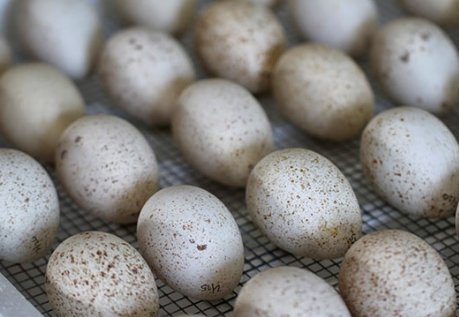
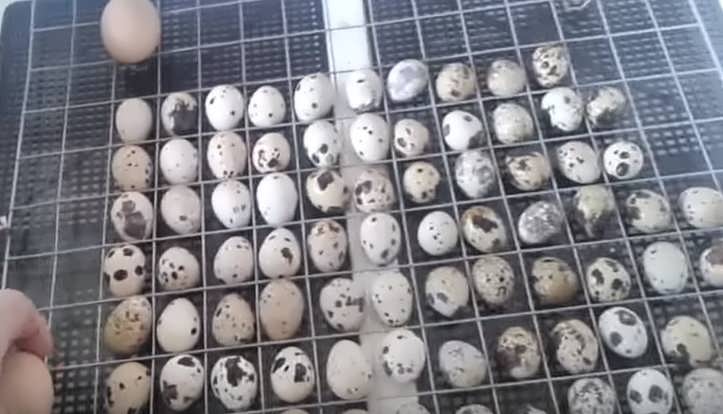
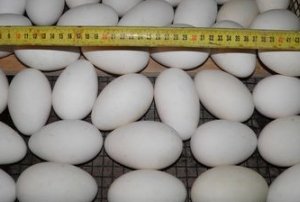
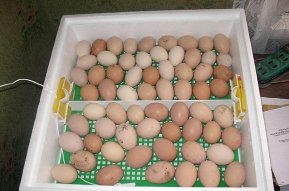
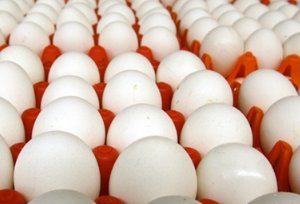

Incubation of chicken eggs does not cause problems for me. There are certain rules and if you follow them, everything will be successful.